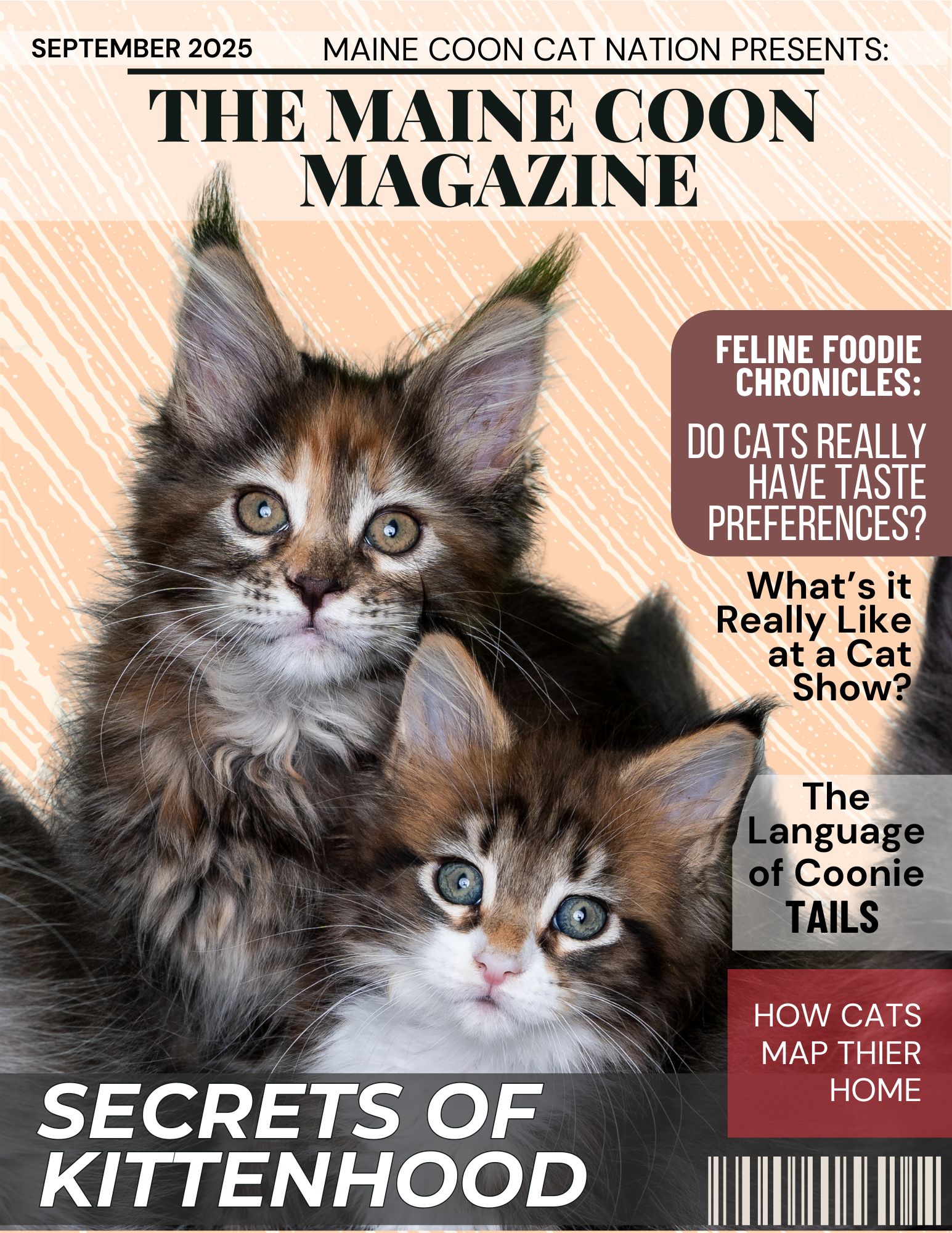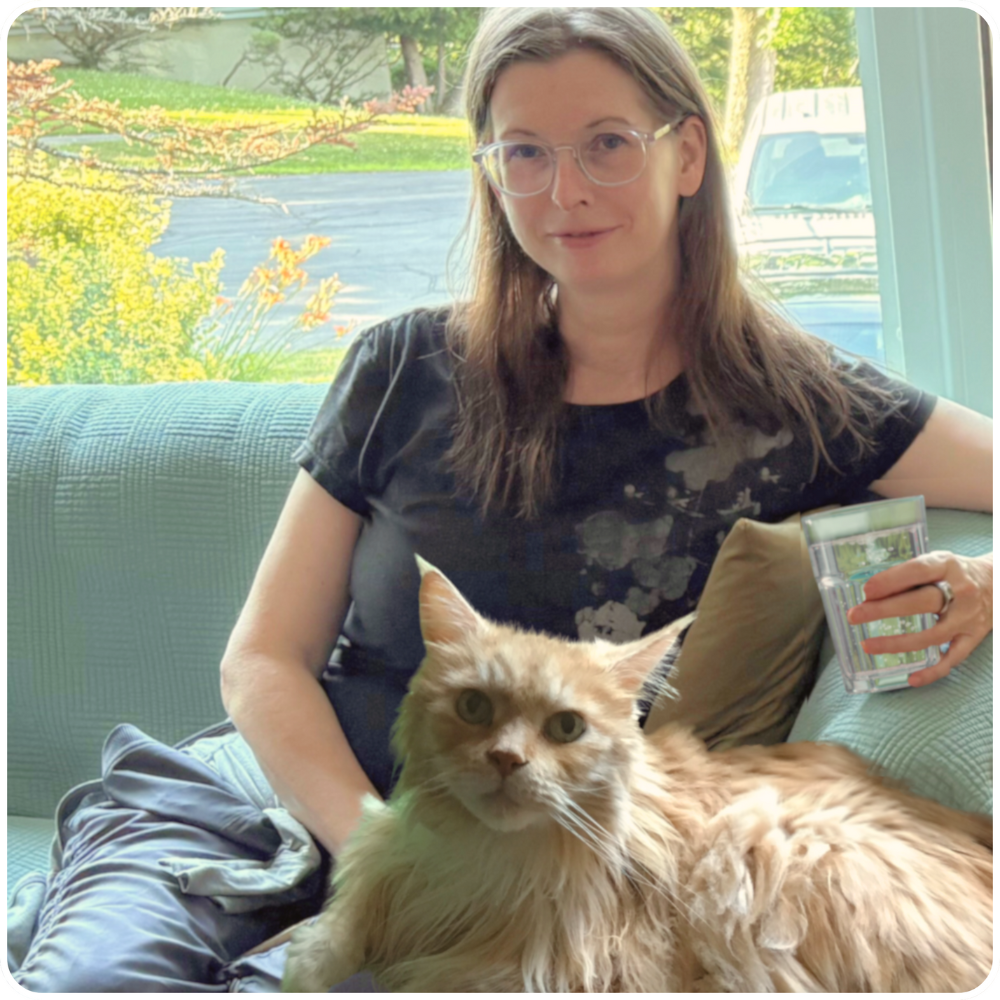- Home
- Maine Coon Care
- cat sleeping habits
Maine Coon Sleeping Habits
Do Cats Sleep A Lot?
Do cats sleep all day? It sure seems like it sometimes, doesn’t it?
But the idea that they sleep all day is a bit of a myth. While they do love a good nap (or ten), they don’t actually spend every moment in dreamland.
If you like this, you'll love our fun, free Daily Digest!

So how much do cats sleep? Do our feline friends really snooze the day away? On average, a kitty clocks around 12 to 16 hours of rest daily. That’s double what most humans need!
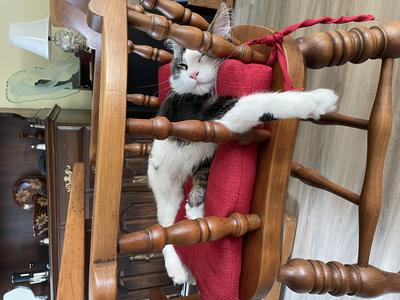 Pepe Le Pew
Pepe Le PewBut here’s the catch: their schedule is entirely different from ours.
Instead of one long stretch at night, they break it up into shorter naps throughout the day and night.
Unlike us, their natural rhythm isn’t set to a strict “daytime awake, nighttime asleep” cycle.
They’re crepuscular, meaning they’re wired to be most active at dawn and dusk. (more on that next).
This behavior harks back to their wild ancestors, who hunted during these twilight hours to avoid predators and catch unsuspecting prey.
This mix of rest and bursts of activity can make it feel like they’re always dozing.
In reality, they’re just conserving energy for those moments of playful chaos, sudden zoomies, or focused pounces.
So, while your Coonie might seem like a professional napper, their schedule is much more complex than it appears.
And really, wouldn’t you love to curl up and take multiple naps a day if you could? They’ve got this energy-management thing all figured out!
The Cat Nap Breakdown
How Long Do Cats Sleep?
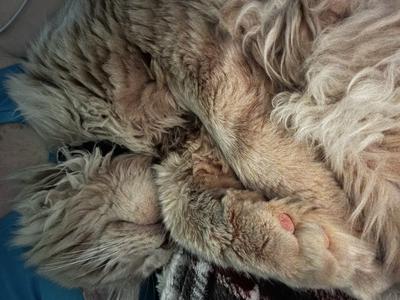 Oliver, from our Red Silver Album
Oliver, from our Red Silver AlbumMost felines rack up an impressive 12 to 16 hours of rest daily. Some even go beyond that. Why? Age and health play a big role.
Kittens and seniors often need more downtime, while a perfectly healthy adult might nap less if their environment is stimulating.
On the flip side, a bored kitty without enough toys or attention may spend extra hours snoozing out of sheer lack of excitement.
What Happens During a Snooze?
Their rest isn’t all the same. Much of it is light, almost alert, allowing them to jump up at the smallest sound.
This stems from their wild instincts to stay aware of potential threats. But during deeper stages of rest, something magical happens - twitching whiskers, flicking paws, and softly meowing in their sleep.
These movements suggest that they’re dreaming. Experts believe our feline friends relive daily adventures in their dreams, from chasing that elusive fly to plotting their next pounce.
Night Owls or Day Dreamers?
You may have noticed bursts of energy in the early morning or late evening. That’s because they’re crepuscular, meaning they’re naturally wired to be most active at dawn and dusk.
This behavior goes back to their ancestors, who hunted during these twilight hours to avoid predators.
For modern house cats, this schedule often doesn’t align with their human’s routine.
Just as you’re settling down for a good night’s sleep, they’re gearing up for a round of zoomies or an intense game of hide-and-seek.
But don’t worry - those early morning chirps and late-night shenanigans are completely normal.
In between their twilight escapades, your furry companion knows how to pace themselves with plenty of power naps.
It’s an energy-saving system that ensures they’re always ready for their next burst of activity - or perhaps just their next bowl of kibble!
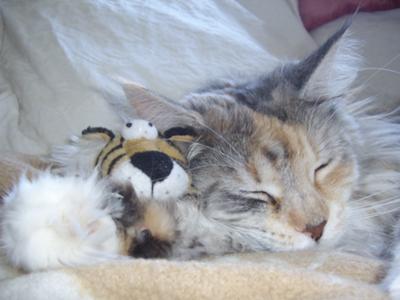 Sleepy Tilly
Sleepy TillySleeping Like a Predator
Do Cats Sleep All Day?
About Energy Conservation
Your Maine Coon may seem like a professional napper, but there’s a reason behind their long periods of rest.
Their wild ancestors passed down an important survival instinct: conserve energy for the hunt.
In the wild, hunting takes immense focus and quick bursts of power. Resting for extended periods ensures predators like lions and tigers are ready to pounce when the moment is right.
Even domestic kitties retain this instinct, despite being fed meals on a schedule.
They still conserve energy for their own "hunting" activities, whether it’s chasing a laser pointer or pouncing on a feather toy.
While their hunting grounds may now consist of cozy living rooms instead of grassy savannas, the drive to rest and recharge is deeply rooted in their DNA.
How This Shows in Daily Life
4 Ways Cats Are Still Like Their Ancestors:
If you've ever watched your feline companion play, you've seen this wild behavior firsthand. They'll crouch low, eyes locked on their "prey."
A flick of the tail signals intense focus, followed by a lightning-fast leap or pounce. It’s a perfect reenactment of a predator ambushing its next meal, even if the target is just a crumpled piece of paper.
You may also notice how they prefer short bursts of activity instead of sustained play.
This mirrors how wild hunters conserve energy between hunts. Instead of running continuously, they stalk and ambush, relying on stealth and power.
Another sign of their inner predator? The quiet observation periods.
Whether perched on a windowsill or peeking from a hiding spot, they’re always watching, calculating their next move. These moments may look like lounging to us, but to them, it’s strategic downtime.
When you look at these natural instincts, it’s easier to see why they need so much rest.
Every nap, stretch, and sprint is a reflection of their wild heritage - a reminder that, deep down, they’re still a little wild at heart.
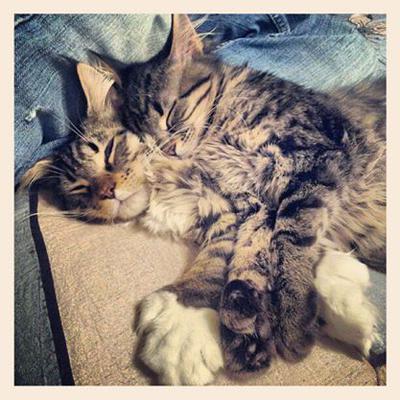
Feline Sleeping Habits: Does Age Change Things?
A feline’s sleeping habits evolve as they move through different stages of life. From playful kittens to mellow seniors, each age comes with unique patterns and needs.
Kittens
During their early months, kittens are the true nap champions. They spend most of the day dozing as their tiny bodies grow and develop.
Sleep is essential for building strong bones, muscles, and healthy organs.
It also supports their learning and memory, helping them absorb everything they observe during those bursts of energy.
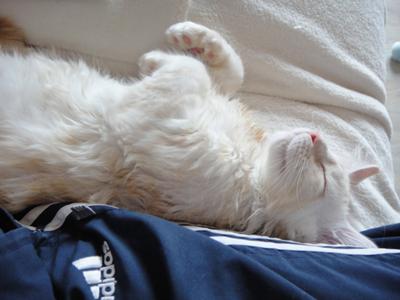
A young kitten's day often alternates between wild, zooming play sessions and long, deep naps - just like little Marley here!
You might notice them suddenly crash mid-play, curling up wherever they are to recharge.
This behavior is perfectly normal and reflects their growing need for rest.
Adult Cats
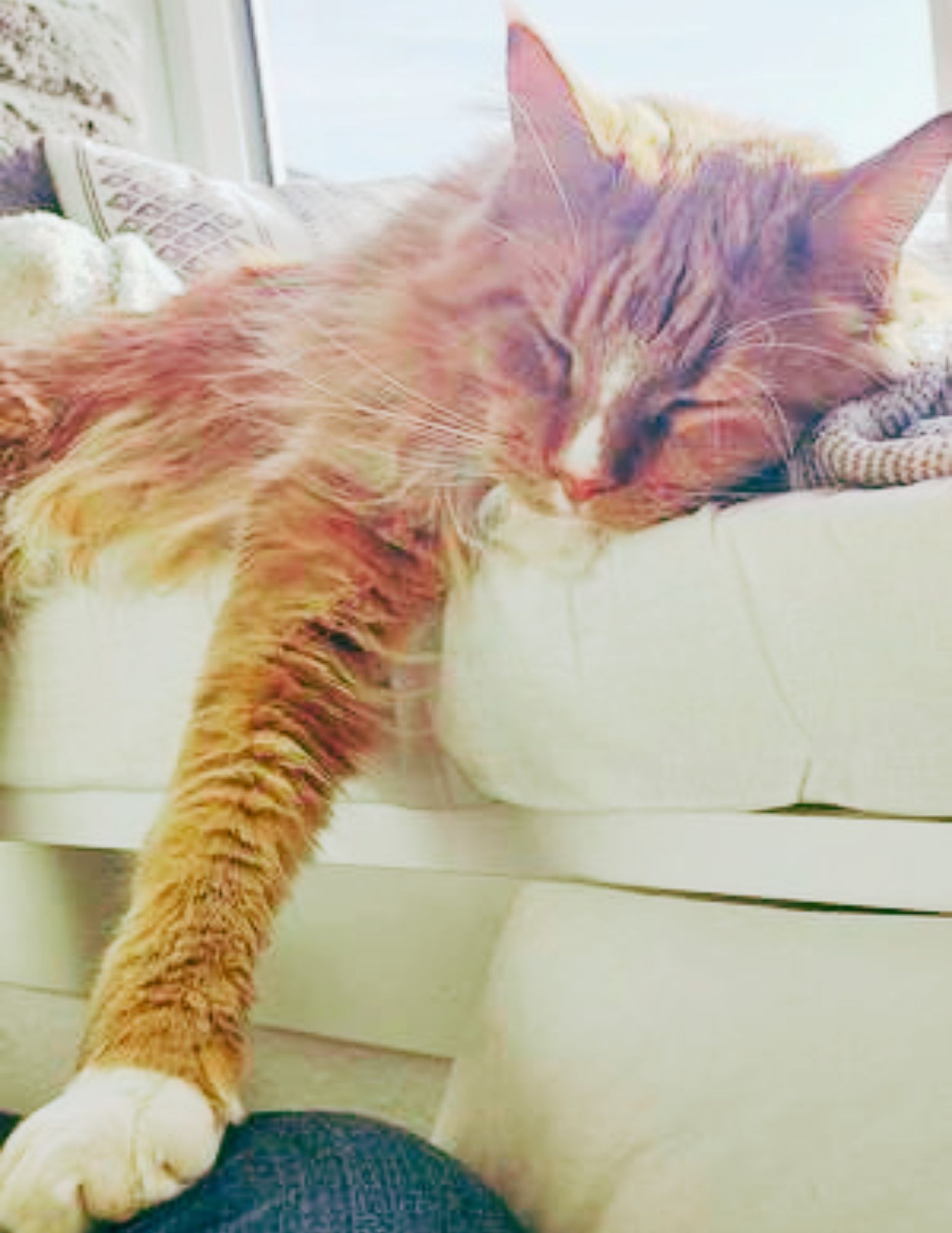
Once they reach adulthood, cat sleeping habits become more consistent, typically around 12–16 hours a day.
Factors such as personality, health, and environment can influence this pattern.
For example, an indoor feline with limited stimulation may nap more out of boredom, while one with plenty of toys or a curious nature may spend more time exploring.
Even among adults, routines can vary.
Some are early risers, active when you start your day, while others may stick to a crepuscular rhythm, with energy peaking at dawn and dusk.
Once you get to know their individual preferences, you'll understand their daily patterns better.
Senior Cats
As they age, their need for rest increases again. Senior felines tend to have lower energy levels and spend more time relaxing.
Their aging bodies require extra downtime to recover from even simple activities.
While it’s normal for older pets to nap more, it’s important to watch for any sudden changes.
Excessive lethargy or difficulty finding comfortable spots may signal underlying health issues like arthritis or thyroid imbalances.
Regular checkups with the vet can ensure they remain healthy and comfortable as they age.
From the playful naps of kittens to the quiet snoozes of senior companions, every stage reflects their changing needs.
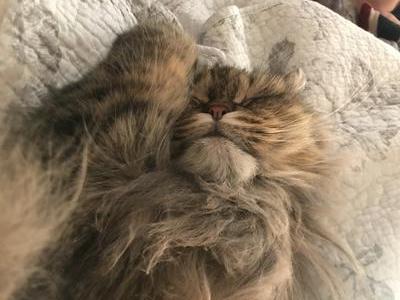 Diva Gracie
Diva Gracie5 Cat Sleeping Positions - And What They Mean:
The way your feline rests can reveal a lot about their mood and comfort level.
Whether curled up in a tight ball or sprawled across the couch, these positions often reflect how secure they feel in their environment:
The Loaf
When your furry friend tucks their paws under their body and sits upright, it’s called “the loaf.” This position suggests they’re relaxed but alert, ready to move if needed.
The Curled Ball
A tightly curled position is common when they want to conserve heat or feel extra cozy. This classic pose shows they’re in a restful, secure state.
Sprawled Out
If your companion stretches out with their belly exposed, they feel completely at ease and safe. This vulnerable position is a big sign of trust.
Some cats take this to the next level - like Hunter, whose favorite position sparked a flood of stories from owners of back-sleeping Maine Coons.
Side Sleeper
Sleeping on their side with legs stretched out means they’re in a deep state of relaxation. It’s a favorite among laid-back kitties.
The Maine Coon Twist
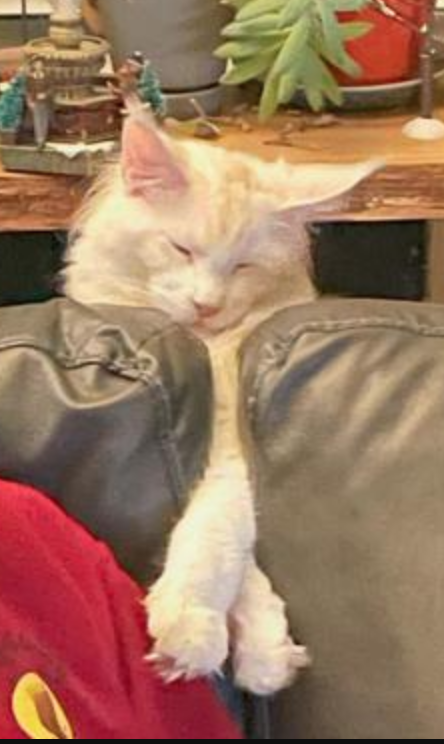 Wrigley can sleep anywhere!
Wrigley can sleep anywhere!Maine Coon sleeping positions are often dramatic, with them lounging belly-up or draping over furniture like royalty.
These big personalities love comfort and often steal the show with their unique poses.
Watching their sleeping habits can be both entertaining and informative.
These positions not only tell you how they’re feeling but also show how much they trust you and their surroundings.
Each twist, stretch, or curl is part of their charm!
Should You Worry About Your Cat's Sleeping Habits?
A kitty’s love for naps is well-known, but not all sleep is created equal.
While it’s normal for your feline friend to spend plenty of time dozing, there are times when their habits might signal a problem. Knowing what to look for can help you spot any red flags.
Signs of Concern
Pay attention if your furry companion starts sleeping more than usual or seems overly lethargic.
For example, an adult cat normally snoozes about 12–16 hours a day. If they’re suddenly sleeping 20 hours or more and skipping meals or playtime, something could be wrong.
Sudden changes in their routine are also worth noting. Maybe your typically active kitty is now curling up all day in odd spots or has stopped seeking interaction.
These shifts often suggest discomfort, illness, or even emotional stress.
What It Might Mean
A variety of issues can lead to abnormal sleeping habits. Health problems like infections, kidney disease, or arthritis can leave your pet feeling drained.
Stressors like a new home, a change in schedule, or another animal in the household may also cause them to retreat and nap more than usual.
Sometimes, boredom plays a role, especially if their environment lacks stimulation or opportunities to play.
In some cases, the solution is simple. Offering more interactive toys, window perches, or extra playtime can help.
If lethargy continues or they show other symptoms like not eating, hiding, or vocalizing differently, it’s time to see a vet. Early intervention can make all the difference.
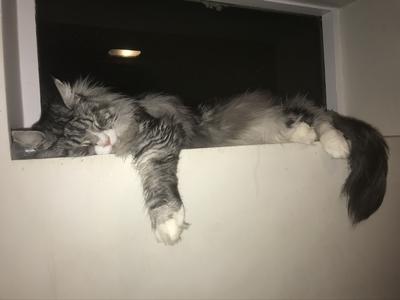 Dexter
DexterSo, do cats sleep all day? Not exactly.
While they rest a lot, their sleep patterns follow natural rhythms that support their health and instincts.
Keep an eye on any changes, and don’t hesitate to reach out to a vet if their habits seem off.
Understanding your kitty’s unique behavior helps ensure they’re happy, healthy, and ready for their next burst of energy!
Top of Do Cats Sleep All Day?
« Back to Maine Coon Cat Care
